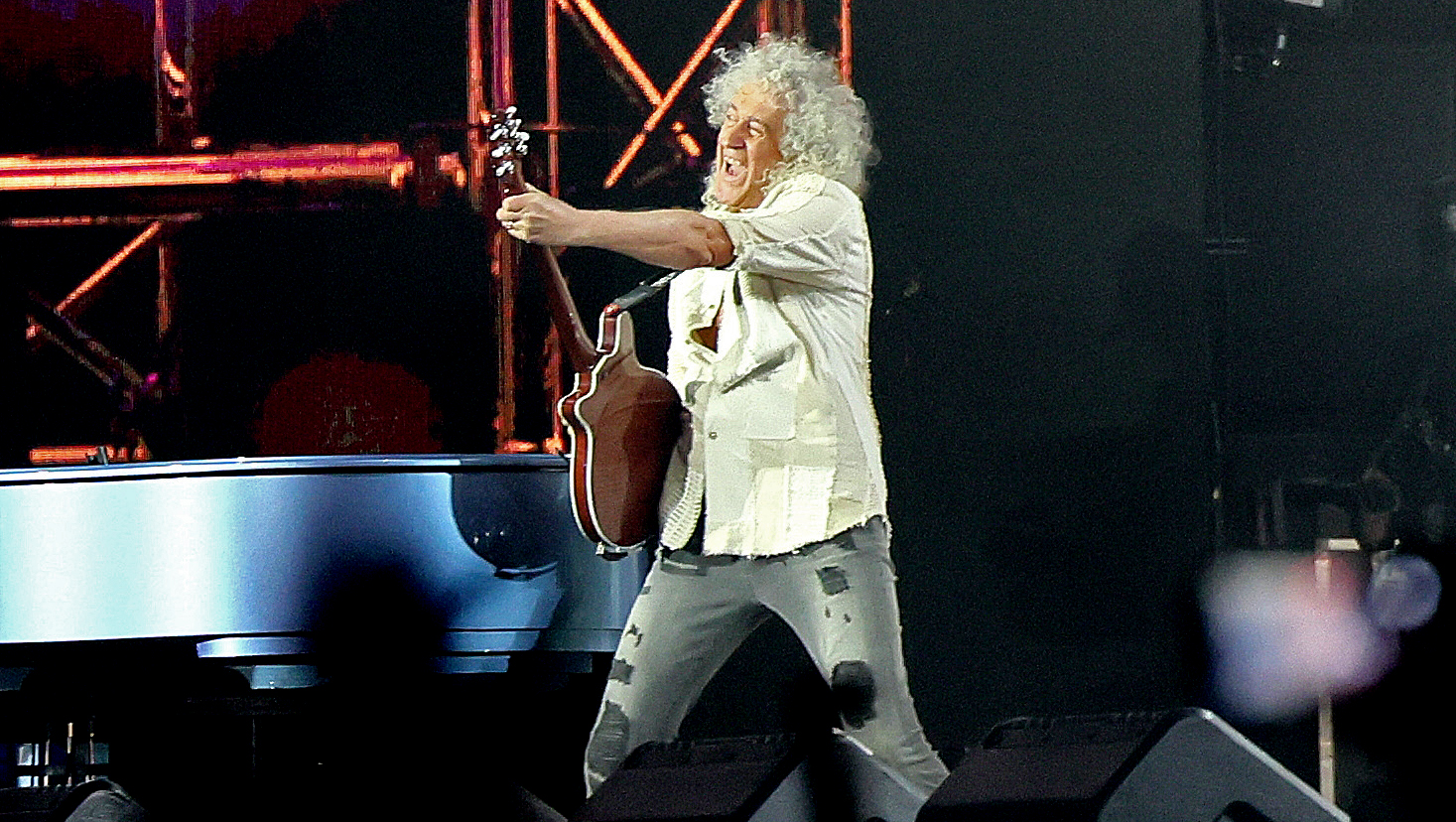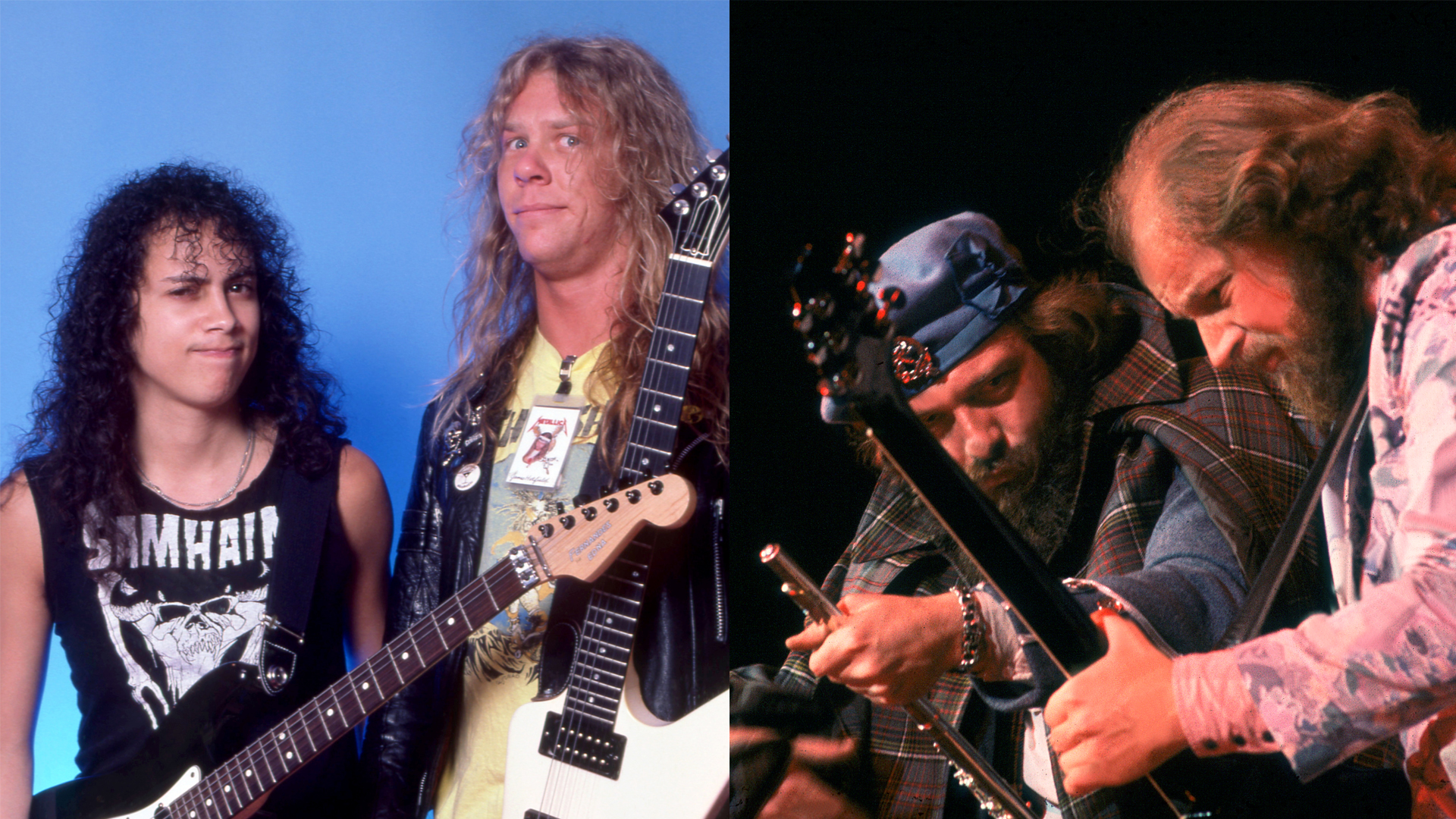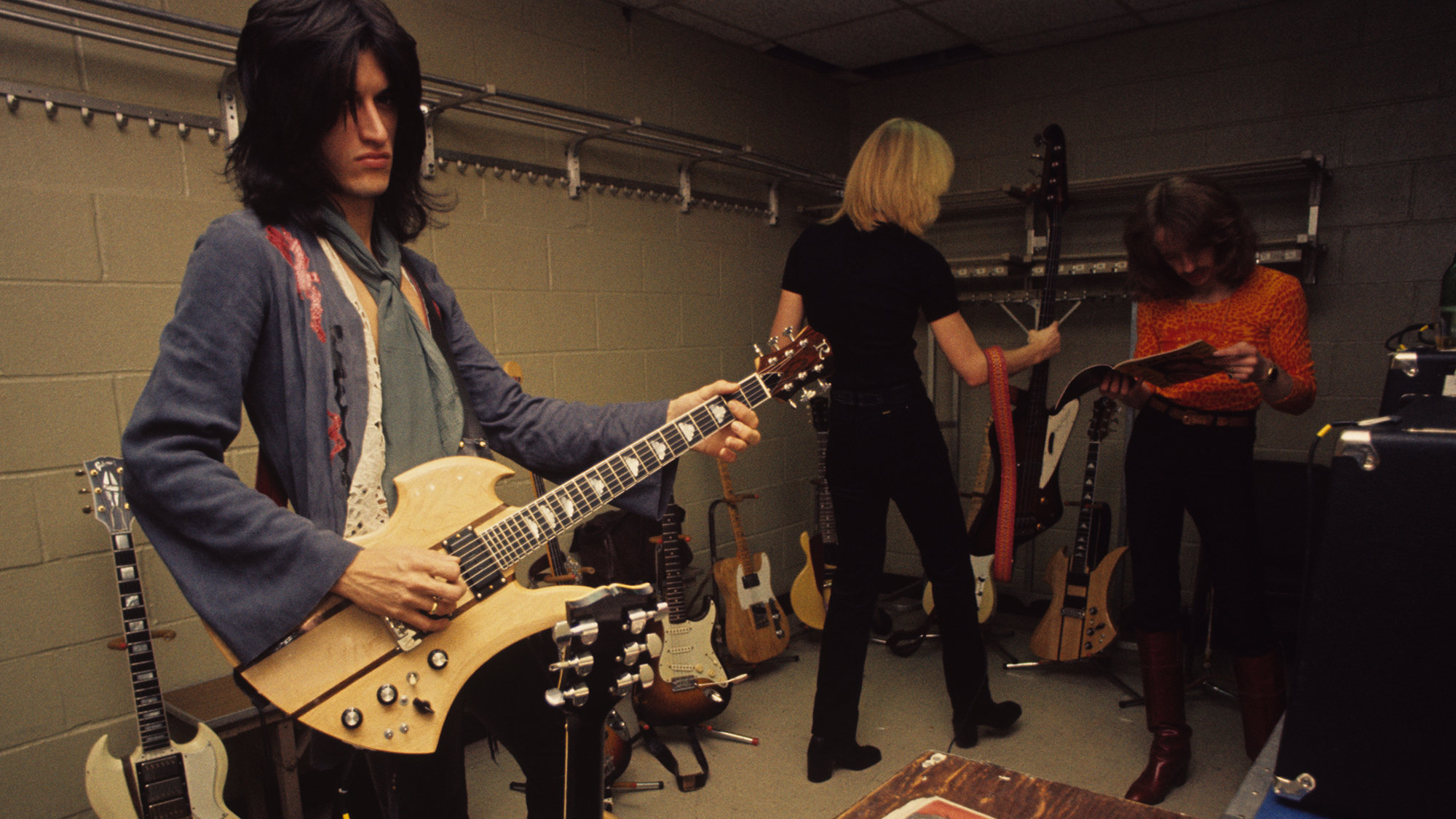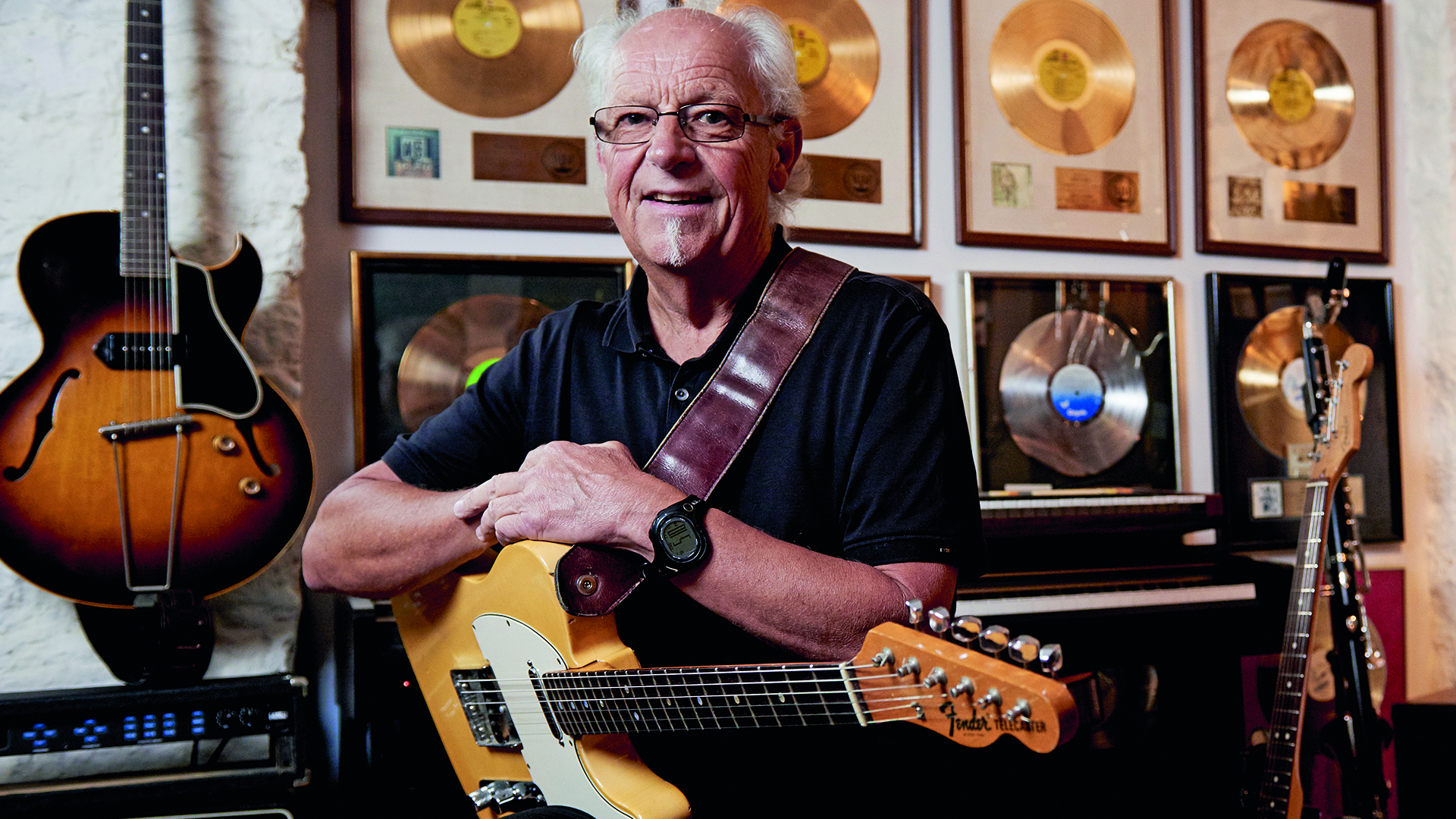Fender’s ’48 Dual Professional Combo Lives Again in a Near-Original Reissue, Courtesy of Mr. Joe Bonamassa
Seventy-five years later, this classic guitar amp design continues to stand the test of time
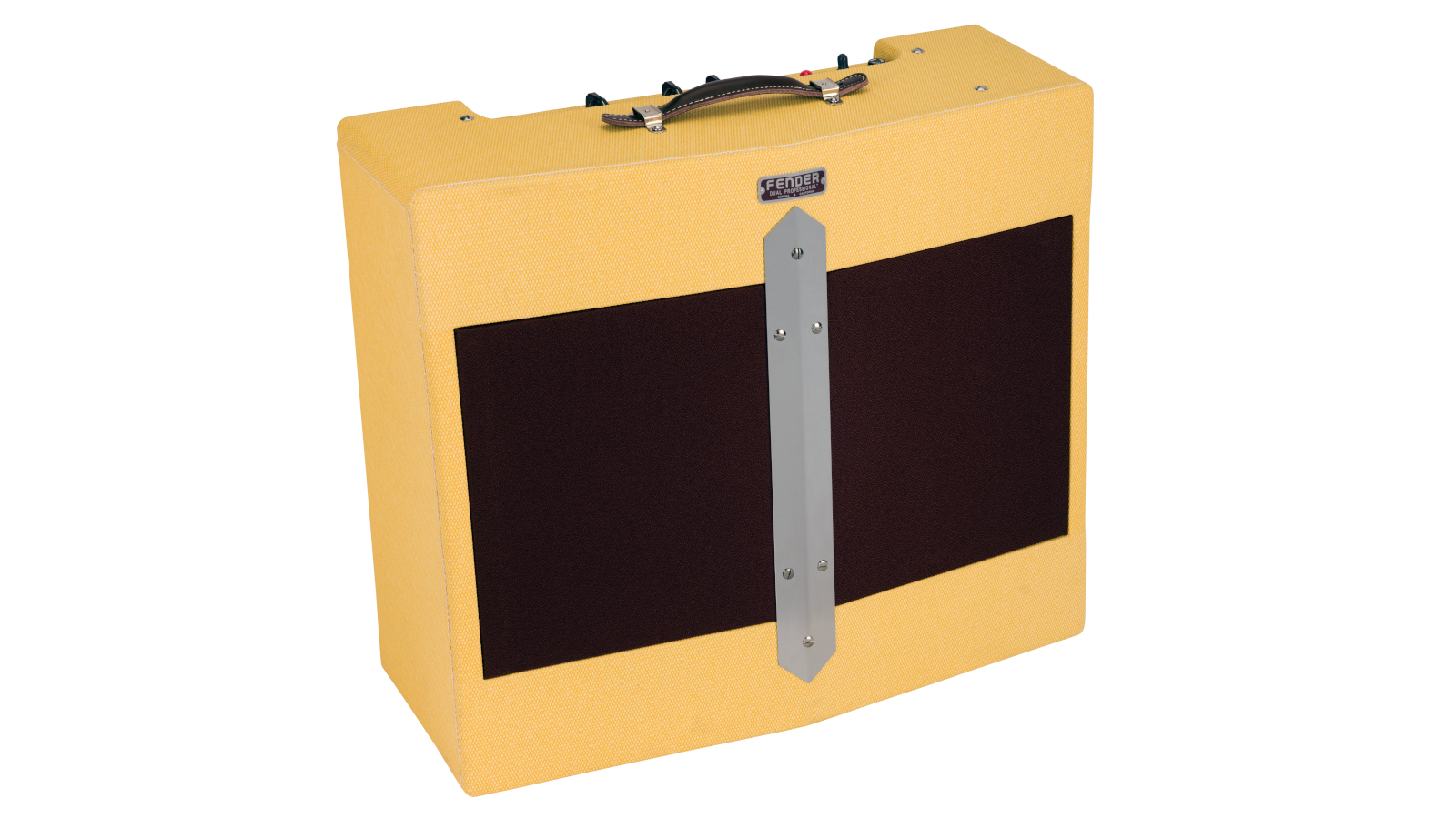
Fender’s recent release of the reissue Dual Professional guitar amplifier – a late-’40s combo designed for use in larger venues – began with a request by Joe Bonamassa to re-create his original ’48 model, a prized piece in his vast collection that is so intact it’s like a time capsule from Fender’s past. “I bought it 15 years ago from a guy in San Francisco, who also sold me a ’54 Strat and a mint-condition tweed Deluxe,” the guitarist tells Guitar Player. “When I got the Dual Pro, it was just for the collection. And then I plugged into it, and I was like, ‘Holy shit, is this thing good!’
“So I told Stan Cotey [Fender’s VP of Product Development] about it and said, ‘Can you replicate the tone?’ Stan took the amp and worked on it for about a year. We tried different caps, different speakers and all these things, and then Fender built the cabinet, which has, like, 11 pieces of the tweed cloth on it that came from the same vendor they used in 1948. So it’s as close as you possibly can get. The new ones are a little bit louder and more efficient, but that’s because everything on the original one is 74 years old. You have to take some artistic liberties with these things, because the components don’t exist anymore. But we got it 98 percent to the original.”
The Dual Pro is a beauty, with its solid-pine, split-baffle V-front cabinet, chromed divider strip, nailed-on logo plate and neatly applied white tweed covering. The chrome-plated top panel is the epitome of simplicity, featuring three knobs (instrument volume, mic volume and tone), a quartet of input jacks (two instrument, mic and low gain), and an on/off toggle switch and jeweled pilot light. The rear side of the open-back cabinet is where you can see the two EF806S preamp tubes and 12AU7 phase inverter, and the 5U4GB rectifier and pair of 6L6 power tubes that reside within a steel cage that’s removable, if you so desire. The old-style, tube-location label that’s glued to the inside of the cabinet is a nice touch.
Undo six screws that hold the shielded rear cover in place, and the hand-wired circuitry is revealed. Here’s where you get to see a phenolic board holding the caps and carbon-comp resistors, the neatly routed leads and the chassis-mounted jacks, pots, switches and tube sockets. The workmanship is top-notch and the whole affair looks rugged and easy to service. Even the power cord goes straight into the chassis instead of a modern IEC socket.
My review amp tipped the scales at 37 pounds and is fairly compact at 22.38 inches wide, 19.75 inches high and a little under 10 inches deep. Bonamassa personally auditioned the custom-made Mercury Magnetics power and output transformers to find the most original-sounding ones, and the speakers are signature 10-inch Celestion JB35s, wired in parallel for a total load of four ohms. Bonamassa says he went with the Celestions because he liked the darker midrange of the ceramic magnets. “To me, they sounded the more accurate,” he explains.
It’s an amazing thing to check out a brand-new amp that has been so painstakingly constructed to be close as possible to something Fender built back when Harry Truman was president. “When Joe loaned me his amp, the first things I did were to draw a schematic, measure all the various voltages and go through it component by component and note their values,” Cotey says. “Interestingly, most of the components were within 10 percent of their original design values, which is crazy because caps and resistors would have been more like 20 percent tolerance back then. Then the guys at the Fender design center built a cabinet and a chassis, and I made as close a copy as I could, which meant using new-old-stock octal pentode tubes for the preamp section. It was a proof of concept for Joe to play and see whether it was going to be worthwhile, and he really liked it.”
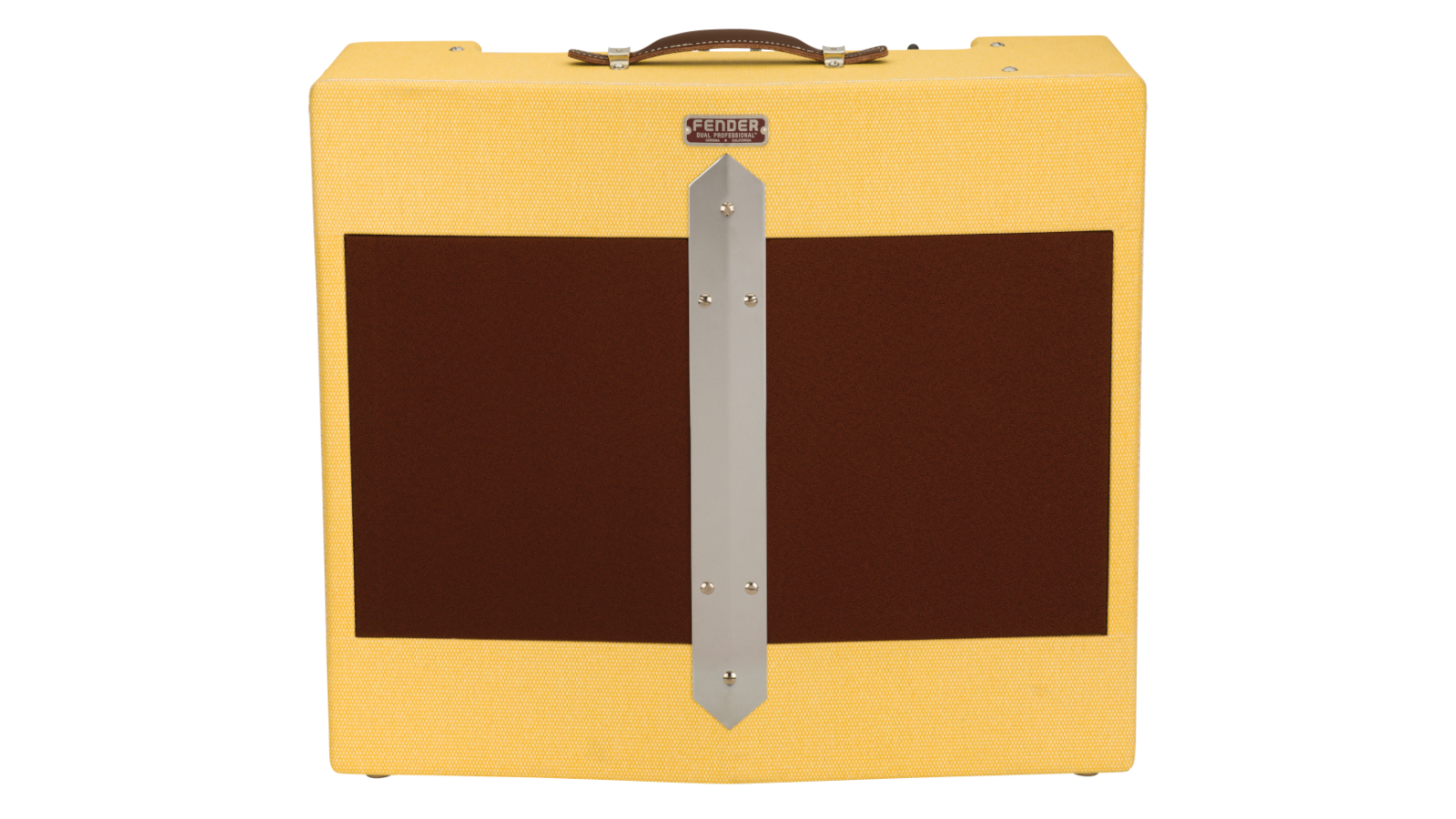
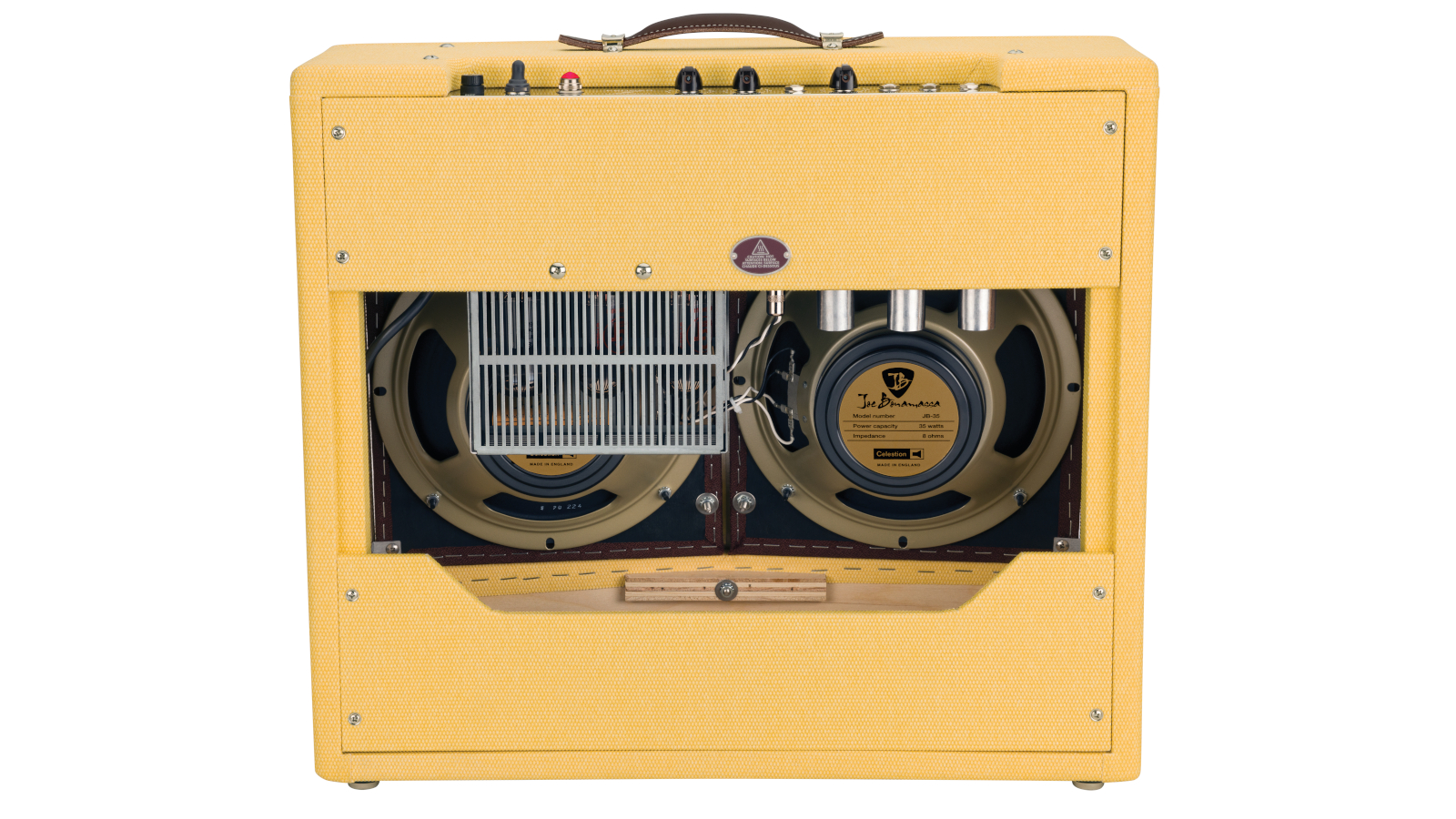
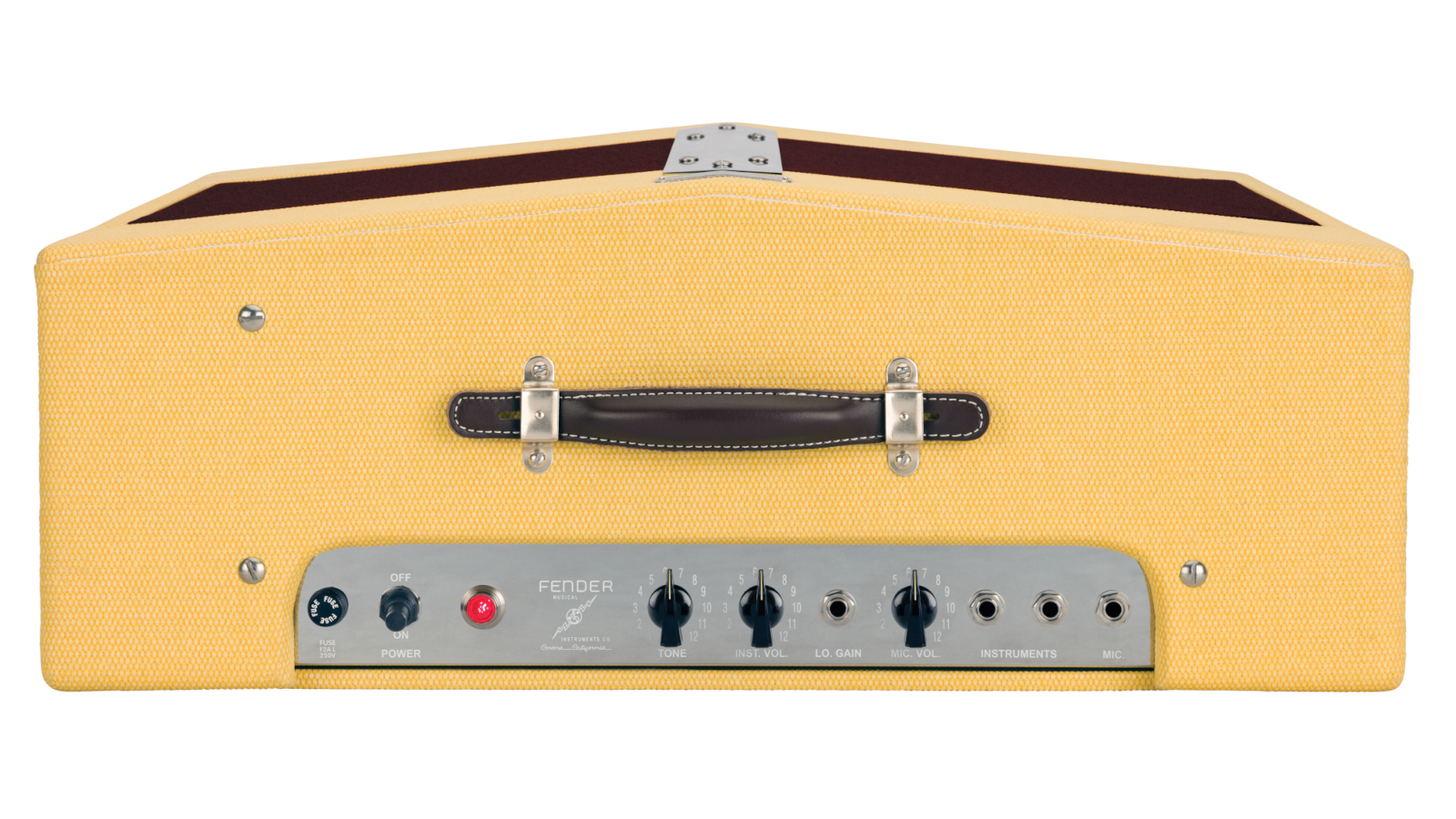
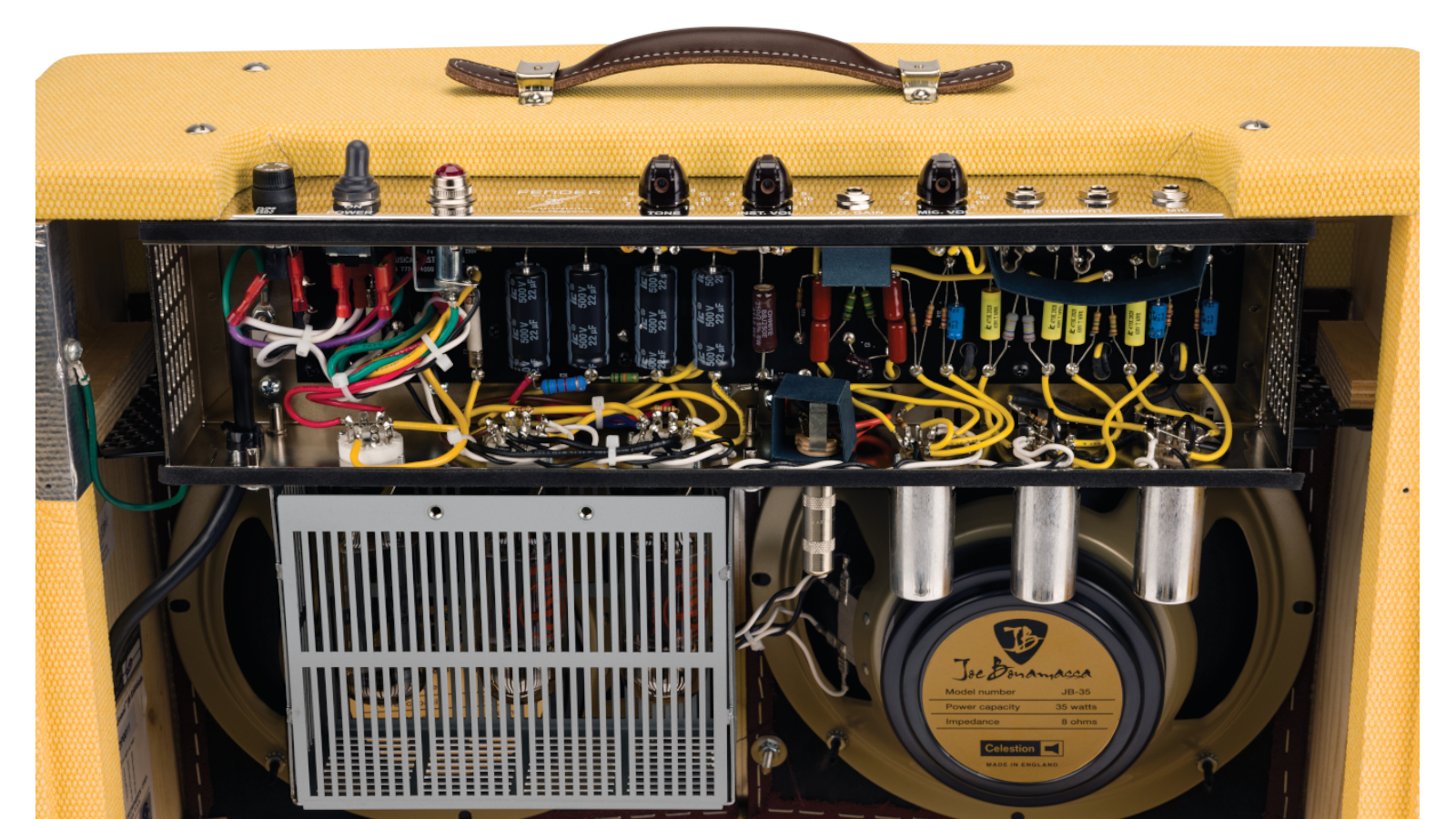

After realizing that sourcing enough non-microphonic new-old-stock octal tubes was going to be difficult at best, a decision was made to try and find a suitable modern pentode tube. “Pentodes distort very differently than triodes” Cotey explains. “They stay clean a lot longer and then dip into distortion more suddenly. That transfer character was important, so we wanted to keep the front end all pentode.
Get The Pick Newsletter
All the latest guitar news, interviews, lessons, reviews, deals and more, direct to your inbox!
“But what do you do when there aren’t many modern pentodes being made? The EF86 is a likely candidate, but I always have a hard time finding non-microphonic ones. I found that JJ Electronic made one called an EF806 that works great and has very low microphonics, so it was an easy substitution. The original amp also used an octal 6N7 for the phase inverter, but since they’re not findable anymore, I used a 12AU7 as a close enough substitute. It’s a single gain stage with another gain stage that’s set up to be just an inverter. It’s simple and it works great.
“This amp does a really good job of being very clean and will get gradually more distorted all the way, until it’s rippin’. It’s really fun to play, because there’s lots of tones on just the volume knob. It’s weird to think how some of the earlier ’50s amps were sometimes a little anemic, but the Dual Pro’s sound was fully realized in the late ’40s.”
Tested with a newer Fender Strat, a Gibson Historic ’59 Les Paul and a PRS Myles Kennedy signature T-style, the Dual Pro proved a fierce little beast that had no problem hanging with loud bass and drums. The amp comes with a dummy plug that increases gain and brightness when inserted in the right-hand “Instruments” bore. I started without it, and the sound was clear and glassy with the volume set at five and the guitar volume on the low side. It transitioned smoothly into distortion when turned up, becoming increasingly grinding until fully cranked, where the tone was round and saturated, and great for lead and grinding rhythm work.
It takes Fender guitars really well, it takes humbucking pickups really well, and it records great
Joe Bonamassa
With the dummy plug inserted, the amp indeed sounded brighter and gainier, delivering gnarly, saturated tones that were dynamically responsive to the guitar’s volume knob and covered the gamut from clean to dirty rhythm to lead. The mic input is another option for a higher gain response, but the tone control is less effective in that mode because it was intended for microphones.
The Dual Pro responds well with pedals, and for small stages the amp’s volume could be backed off to yield both awesome cleans and killer distortion when fired up with either a TS-808 or a TWA Scott Henderson SH9. Playing this amp is an amazing experience because of the way it dynamically goes from being almost impossibly clean to being really round and super distorted, and you get it all from the guitar volume and your playing touch. It feels more like playing an instrument than just an amplifier, and it’s one of many things that make the Dual Pro so lovable.
“It takes Fender guitars really well, it takes humbucking pickups really well, and it records great,” Bonamassa says. “You put a mic in front of it and it’s like, ‘Oh God, it’s larger than life!’ It’s not loud enough for me live” – JB uses two 1987 Marshall Silver Jubilees, two Fender reissue High-Powered Twins and three Dumbles onstage – “but it would be good in a lower-volume situation. It’s really a session amp, where you plug in a reverb or tremolo pedal and it just works. In 1948, Leo Fender had put out the Deluxe and maybe the Princeton. But the Dual Pro was the first amplifier that he would give to people in professional bands.”
Seventy-five years later, it continues to stand the test of time.
Visit Joe Bonamassa’s shop for more details.

Art Thompson is Senior Editor of Guitar Player magazine. He has authored stories with numerous guitar greats including B.B. King, Prince and Scotty Moore and interviewed gear innovators such as Paul Reed Smith, Randall Smith and Gary Kramer. He also wrote the first book on vintage effects pedals, Stompbox. Art's busy performance schedule with three stylistically diverse groups provides ample opportunity to test-drive new guitars, amps and effects, many of which are featured in the pages of GP.
A gigantic $360 off Positive Grid's celebrated BIAS amp sim software may have just put the nail in the coffin of my beloved valve combo
"Let’s take acoustic-electric amplification to its ultimate realization." How to make an acoustic amp shimmer like a vintage Fender, smolder like a Dumble or scream like a Marshall
